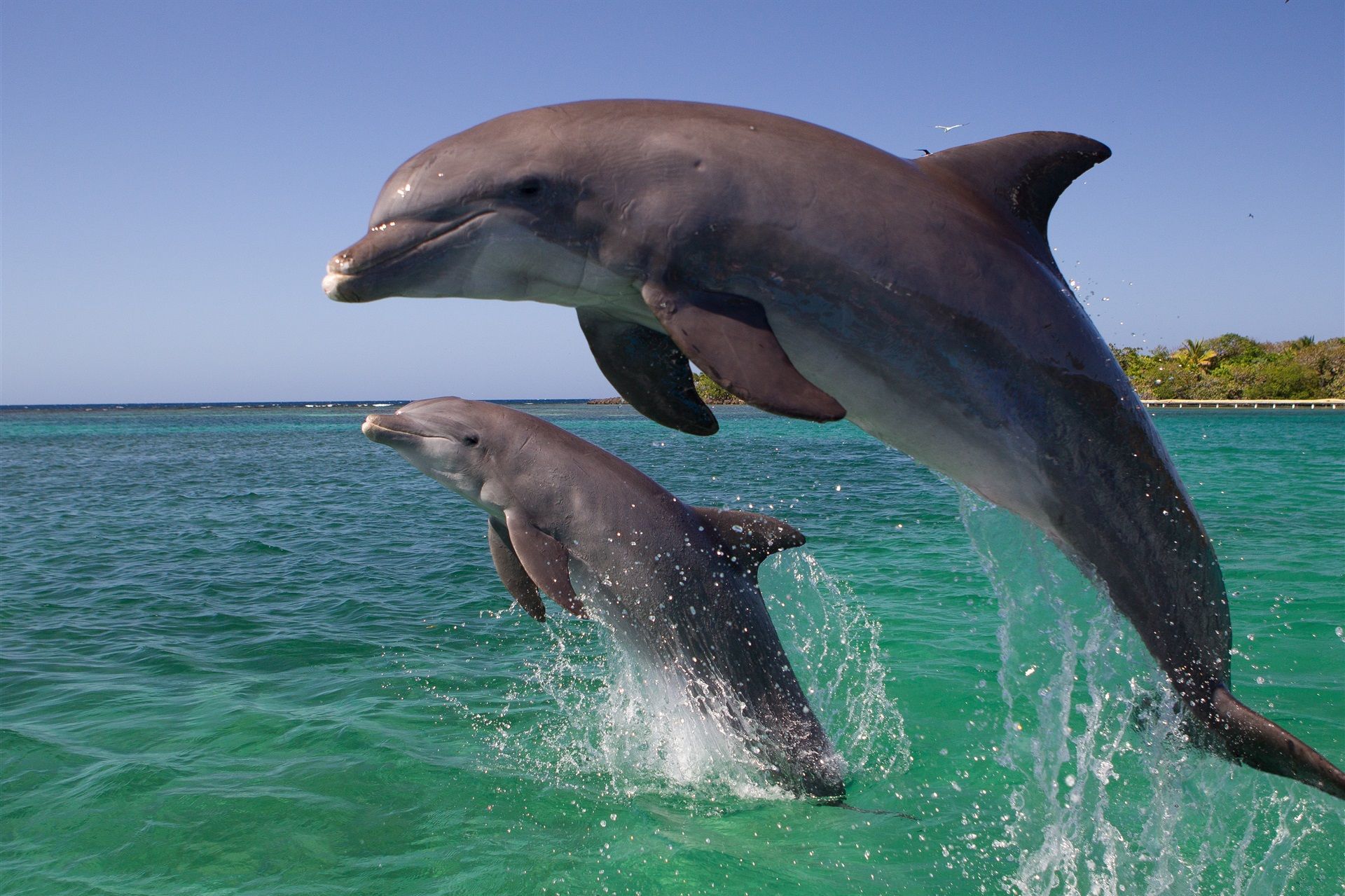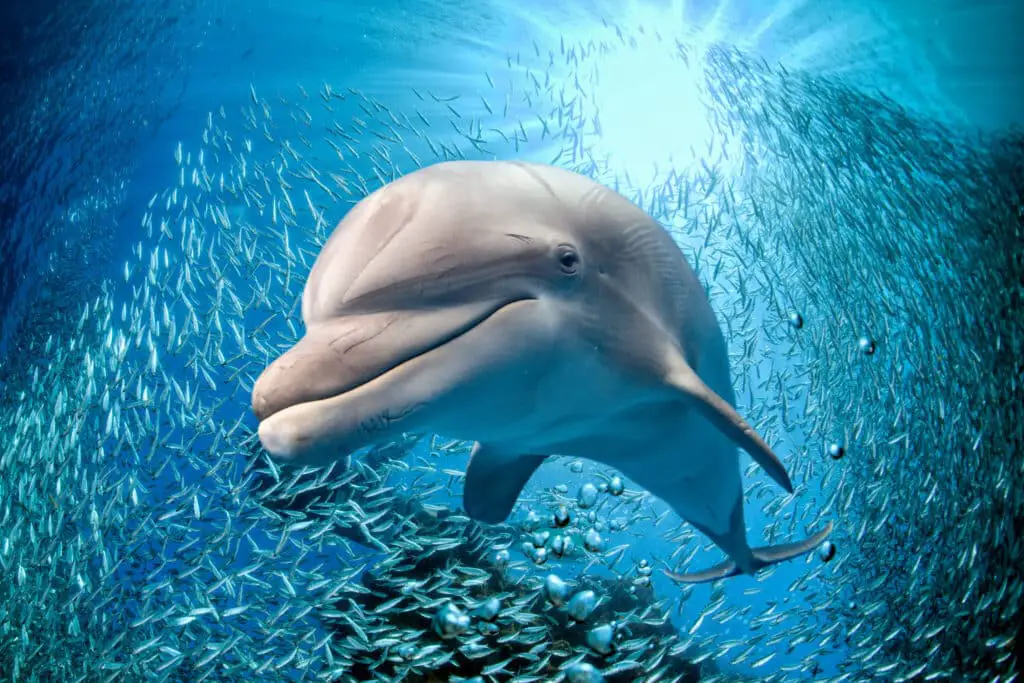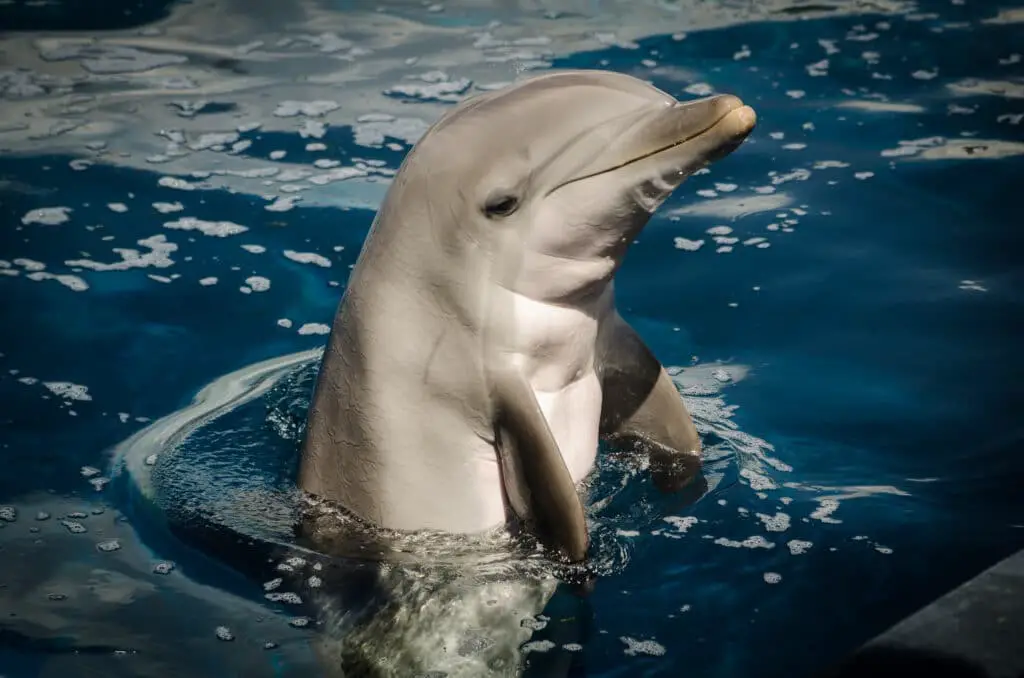Were Dolphins Land Animals

Introduction
The enigmatic world of dolphins, those graceful and intelligent denizens of the deep, has long fascinated humans with their playful antics and apparent affinity for the ocean. But as we gaze upon these marine marvels, it’s easy to overlook a distant past when dolphins were not the inhabitants of the sea we recognize today. The question of whether dolphins were once land animals opens a portal to the evolutionary history that binds these creatures to the very origins of life on Earth.
Diving into the annals of paleontological and evolutionary research, we uncover a time when the ancestors of modern dolphins were creatures that traversed both land and water. These distant relatives are known as cetaceans. Embarked on a remarkable journey of adaptation, transitioning from terrestrial habitats to aquatic environments over millions of years.

Were dolphins originally on land?
Over the 50 million years of evolution, the ancestors of dolphins adapted from being terrestrial to aquatic. Terrestrial animals mainly have vertical spines. Dolphins have vertical spines leaving them swimming with vertical movements, while fish movements are horizontal. No, dolphins were not originally on land.
Dolphins are aquatic mammals and they adapt to life in the water. Terrestrial (land-dwelling) mammals traced their evolutionary lineage back, but they came back to aquatic environments millions of years ago. Dolphins belong to the cetacean group, which also includes whales and porpoises.
The transition from Land to Water:
- The transition from land to water occurred over millions of years through a process called “secondary adaptation to aquatic life.” Scientists believe that small, four-legged creatures that lived on land were the ancestors of dolphins. These early mammals gradually adapted to aquatic environments. Eventually evolving into the streamlined and highly adapted marine animals we know today.
Evidence of Evolution:
- Fossil evidence provides insights into the evolutionary history of cetaceans. Fossils of ancient whale ancestors show gradual changes in bone structure that reflect the transition from limbs to flippers and adaptations for life in the water.
- The evolutionary record reveals a series of intermediate forms that display traits characteristic of both land-dwelling and aquatic animals.
Aquatic Adaptations:
- Over time, these ancestral mammals underwent a range of adaptations to suit life in the water, including changes in body shape, limb structure, and sensory systems. These adaptations allowed them to excel in an aquatic environment. Such as developing streamlined bodies for efficient swimming, specialized limbs for propulsion, and a blowhole for breathing at the water’s surface.
Are dolphins in the water or on land?
Dolphins live in the world’s seas and oceans and in some rivers too. Some dolphin species prefer to live in coastal areas, while others like shallow waters which are located further out to sea. Dolphins are unequivocally creatures of the water, uniquely adapted to thrive in their marine environment. As marine mammals, dolphins possess a complex array of physiological, anatomical, and behavioral adaptations that equip them for life in the ocean. Dolphins have developed over thousands of years to survive in the underwater realm. Unlike terrestrial animals that are tailored to life on land.
Every aspect of a dolphin’s biology reflects its aquatic lifestyle. Dolphins’ sleek physiques and strong flippers make them highly effective swimmers and maneuvers in the water. They generate important thrust when they drive themselves forward with their horizontally oriented tails, or flukes. The dorsal fin serves as a stabilizer, aiding in maintaining balance while swimming.
Dolphins possess a unique respiratory system that enables them to breathe without the need for conscious effort. Their blowholes, located on the top of their heads, allow them to surface quickly for a breath of air before seamlessly returning underwater. This adaptation allows dolphins to extract oxygen from the air while preventing water from entering their lungs.
Dolphins’ highly developed senses play a pivotal role in their aquatic lifestyle. Echolocation, is akin to a biological sonar system. Assists them in navigating and hunting by emitting sounds and interpreting the resulting echoes. This ability aids in locating prey, identifying objects, and navigating through often murky waters.
Were dolphins once land mammals?
Whales and dolphins were once land mammals before they evolved into the ocean-going mammals we see today. Just like humans, some dolphin species have hair, called lanugo, on their bodies shortly after birth. This hair is later shed. Whales and dolphins still need to breathe air, so how do they sleep underwater?
Yes, the ancestors of dolphins were once terrestrial (land-dwelling) mammals. These early ancestors, known as “archaeocetes,” lived around 50 to 60 million years ago. Over time, these terrestrial mammals gradually evolved adaptations that allowed them to move into aquatic habitats. This transition involved changes in limb structure, body shape, and other features to better suit an aquatic lifestyle.
The evolution of dolphins from land-dwelling mammals to marine creatures is a remarkable example of how organisms can adapt and diversify in response to changing environments. The history of dolphin evolution provides valuable insights into the interconnectedness of life on Earth and the ways in which species have evolved to occupy different ecological niches.
When did dolphins leave the land?
Is it true that Dolphins Evolved from Terrestrial Animals? Around 50 million years ago, certain four-legged land creatures started spending more and more of their time in water. (An animal that there are fossil records of from around this time named Pakicetus may represent this initial stage).
Dolphins are descendants of terrestrial mammals that transitioned from land to water over a period of millions of years. This process, known as secondary adaptation to aquatic life, began around 50 to 60 million years ago. The initial ancestors of dolphins were small, four-legged mammals that lived on land. Over time, these creatures began to explore aquatic environments, which eventually led to their return to the water.
The transition from land to water occurred through a series of evolutionary changes that enabled these early mammals to thrive in aquatic habitats. Fossil evidence provides insights into this gradual transformation, revealing intermediate forms with features that bridge the gap between land-dwelling and aquatic organisms.
As these ancestral mammals inhabited aquatic ecosystems, they developed adaptations that allowed them to excel in the water. These adaptations included changes in body shape, limb structure, and sensory systems. Over millions of years, these adaptations gave rise to the streamlined, efficient marine animals we now recognize as dolphins.
Are dolphins born in water?
Calves are born in the water. Deliveries are usually tail-first, but head-first deliveries are also seen. The umbilical cord snaps during delivery. Sometimes an assisting dolphin may stay close to the new mother and calf.
Yes, dolphins are born in water. Being marine mammals, dolphins give birth to their offspring in water, much like other aquatic mammals such as whales and seals. Female dolphins typically give birth to a single calf, although twins are possible but rare. Dolphin calves have gotten used to their aquatic environment during their procedure of birth and the very beginning of their life.
Dolphin calves are born tail-first, which minimizes the risk of drowning during birth. The mother assists the calf to the surface immediately after birth, allowing it to take its first breath.
After birth, the calf is instinctively buoyant, enabling it to float alongside its mother. Mother dolphins are highly nurturing and protective, guiding their calves and providing sustenance through nursing. The ability to give birth and raise their young in water is a testament to dolphins’ remarkable adaptations to life in the ocean.
Can dolphins survive without water?
A dolphin can live out of water for hours IF it is kept wet and cool. One of the biggest dangers to a dolphin being out of water is their inability to regulate their body temperature. We will explain how dolphins regulate their blood temperature and the risk this poses to dolphins out of the water for too long.
Dolphins are entirely aquatic creatures, adapted to life in the water, and they cannot survive outside of their marine habitat. Their anatomy, physiology, and behavior are intricately linked to the marine environment, and their bodies are equipped to excel in underwater conditions.
Dolphins are mammals, which means they breathe air and give birth to live young. They have lungs for breathing, and their blowholes allow them to surface and take in air while expelling carbon dioxide. This respiratory system is specialized for life in the water, enabling it to remain submerged for varying periods while surfacing regularly for breath.
Their skin is designed to reduce water resistance, and their streamlined bodies allow them to move efficiently through the water. Specialized adaptations like flippers, flukes (tails), and dorsal fins aid in swimming, navigation, and communication.
Dolphins are exquisitely adapted to their marine environment, and their survival is intricately tied to water. Their physiological, anatomical, and behavioral characteristics are tailored to life in the ocean, making them reliant on water for their existence.
Why do dolphins come to land?
Live (or recently dead) whales or dolphins often come onto the shore because they are old, sick, injured, and/or disorientated. Dolphins are marine mammals and have evolved to thrive in the water. While dolphins are capable swimmers and are known for their agility and grace in the ocean, they do not come to land willingly or naturally. Unlike seals or sea lions, which are pinnipeds and spend time on both land and in the water, dolphins lack the adaptations for terrestrial life.
Dolphins have several characteristics that make them well-suited for life in the water but ill-suited for land:
Body Structure: Dolphins have streamlined bodies and are optimized for swimming in water. They lack limbs that are well-suited for moving on land.
Respiratory System: Dolphins breathe air, but their respiratory system is adapted for breathing through their blowholes at the water’s surface. They cannot breathe efficiently on land like mammals with lungs adapted for terrestrial life.
Locomotion: Dolphins’ flippers are designed for swimming, not for supporting their weight on land. Their tail flukes are powerful for propulsion in water but would be ineffective on land.
Skin: Dolphins have moist, water-adapted skin that helps them reduce water resistance. On land, this type of skin would quickly dry out and become a barrier to their survival.
In essence, dolphins are water-adapted animals, and their anatomy, physiology, and behaviors are all tailored to life in the ocean. While there might be rare cases of dolphins stranding themselves on beaches due to illness, disorientation, or other factors, this behavior is not natural or intentional for dolphins.
Why did dolphins become water animals?
The theory is that some land-living ungulates favored munching on plants at the water’s edge which had the added advantage of allowing them to easily hide from danger in shallow water. Over time their descendants spent more and more time in the water and their bodies became adapted for swimming.
Dolphins are believed to have evolved from terrestrial mammals that transitioned from land to water over millions of years. This transition, known as secondary adaptation to aquatic life, was driven by a combination of ecological factors and evolutionary pressures. The process of returning to the water involved a series of adaptations that allowed these ancestral mammals to exploit new niches and thrive in aquatic environments.
Key Factors in Becoming Water Animals:
Ecological Opportunities: The oceans provide a vast and relatively untapped ecosystem with abundant food resources. Early mammals that ventured into aquatic habitats found new ecological niches and opportunities for survival.
Evolutionary Pressures: Over time, the evolutionary pressures of the aquatic environment shaped the traits of these ancestral mammals. Features that were advantageous for life in the water, such as streamlined bodies and specialized limbs, became favored by natural selection.
Adaptations for Aquatic Life: Through millions of years of evolution, these terrestrial ancestors developed adaptations for swimming, diving, and navigating in the water. These adaptations include streamlined bodies, flippers for propulsion, and blowholes for efficient breathing.
Loss of Terrestrial Adaptations: As these animals transitioned back to the water, they gradually lost adaptations that were no longer needed for terrestrial life. Limbs evolved into flippers, and the anatomy of their respiratory system changed to accommodate breathing at the water’s surface.
The evolution of dolphins from land-dwelling ancestors to highly specialized marine animals showcases the incredible adaptive power of natural selection. Over time, the pressures and opportunities presented by the aquatic environment led to the development of the features and behaviors that define modern dolphins as remarkable water animals.

Conclusion
The notion that dolphins, those masters of the ocean, were once land animals underscores the marvels of evolution that have shaped the world’s biodiversity. The evolutionary journey of these creatures from terrestrial to aquatic habitats serves as a testament to the remarkable adaptability of life in the face of changing environments.
As we reflect on the distant past when dolphins’ ancestors roamed the land, we gain a profound appreciation for the interconnectedness of life forms and the intricate dance of adaptation that spans eons. From land to sea, these beings have navigated the currents of evolution, leaving a trail of transformative adaptations in their wake.
The story of dolphins’ transition from land to sea serves as a reminder of the fluidity of life’s pathways and the profound impact that environmental changes can have on shaping the course of evolution.



